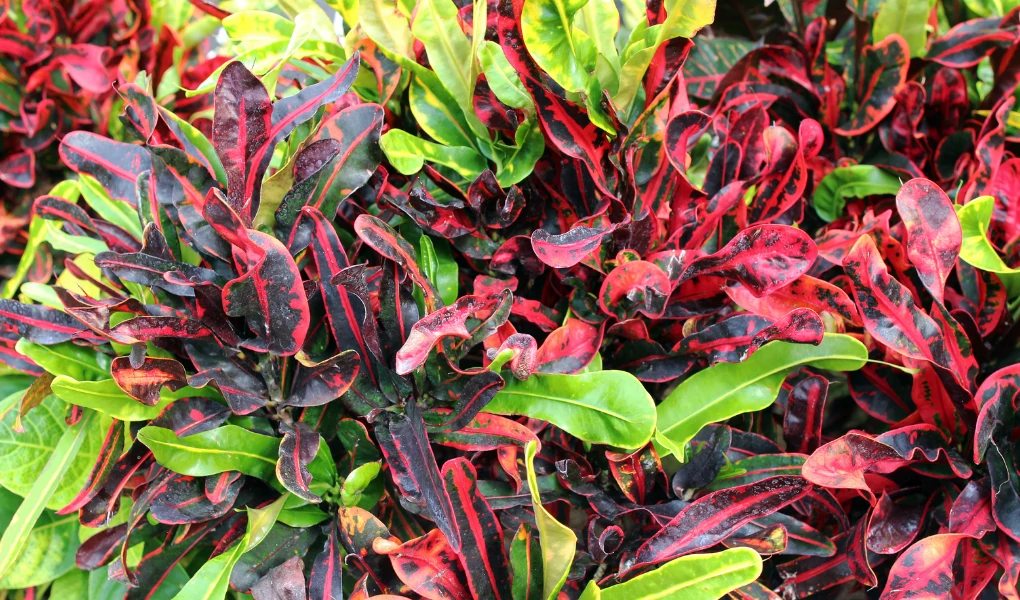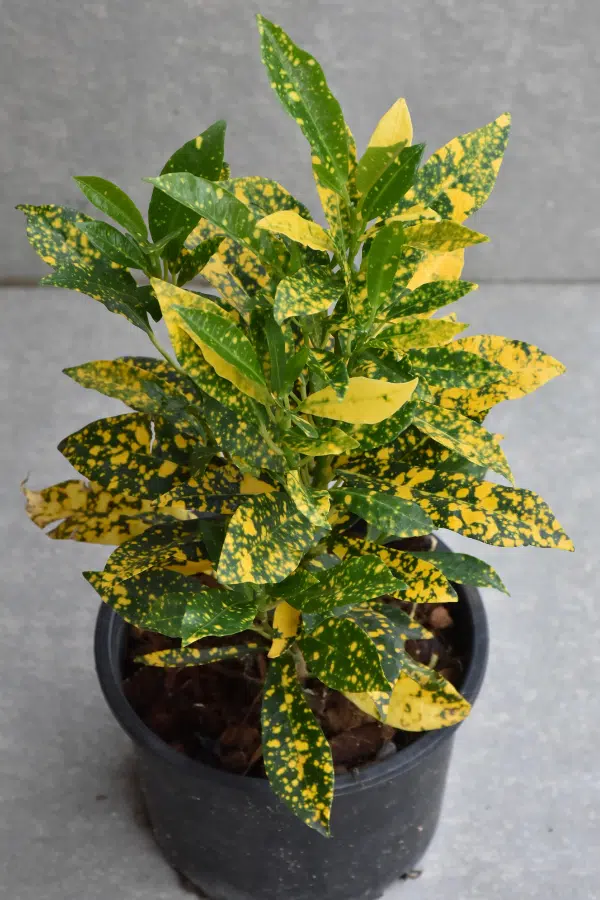Croton plants, also known as Codiaeum variegatum, are popular houseplants known for their colorful, variegated foliage. With their tropical origins, croton plants require specific croton plant watering practices to thrive indoors. Learning the signs of overwatering vs. underwatering along with following a proper croton watering schedule is key to keeping your croton healthy and vibrant.
About Croton Plants

Crotons are native to islands in the western Pacific and Asia. These shrubs grow as understory plants in tropical forests and have adapted to warm, humid environments. There are hundreds of Croton cultivars with colorful patterns like spirals, stripes, and blotches in shades of yellow, orange, red, pink, and green. Popular Croton varieties include Petra Croton, Gold Dust Croton, and Mammy Croton etc.
Croton Plant Water Requirements

Croton plants need a regular supply of water but are sensitive to overwatering. Providing the right amount of water for your croton depends on several factors.
Factors Affecting Water Needs
- Light – Crotons in brighter light dry out faster than plants in lower light.
- Temperature – Warmer conditions cause crotons to use water more quickly.
- Humidity – Dry air increases the plant’s transpiration rate.
- Soil – Well-draining soil requires more frequent watering than moisture-retentive soil.
- Size of Plant – Larger crotons need more water than smaller, younger plants.
Signs of Underwatering
An underwatered croton shows symptoms like:
- Wilting or drooping leaves
- Leaves and stems feeling dry or crispy
- Dull-looking foliage
- Brown leaf tips or edges
- Increased leaf drop
Signs of Overwatering
Overwatered crotons exhibit:
- Yellow, translucent leaves
- Mushy, blackened stems
- Leaf drop
- Brown leaf spots
- Soft, foul-smelling roots (root rot)
Best Practices for Watering Croton Plant

Follow these tips for hydrating your croton properly:
Watering Frequency
- Water whenever the top 1-2 inches of soil become dry.
- During the growing season, this usually means watering every 5-7 days.
- In winter, allow soil to dry out further between waterings.
Watering Method
- Water thoroughly until it drains from the pot’s drainage holes.
- Avoid letting croton sit in water. Empty drainage tray after 30 minutes.
Water Quality and Temperature
- Use room temperature, filtered or distilled water.
- Chlorinated or fluoridated tap water may damage croton’s foliage over time.
Adjusting for Seasons
- In low humidity winter months, mist leaves occasionally.
- Water less often in winter, allowing soil to almost fully dry out between waterings.
Propagating Croton Plant in Water

Crotons can be propagated by taking cuttings and rooting them in water. Here’s how:
Taking Cuttings
- Select a healthy stem around 6 inches long.
- Use a clean, sharp knife or pruners to detach the stem below a leaf node.
- Remove lower leaves, leaving just a few leaves at the top.
Caring for Cuttings in Water
- Place the croton cutting in a jar of room temperature water.
- Change water every 4-5 days to prevent rotting.
- Provide bright, indirect light. Avoid direct sunlight.
- Look for new root growth after 2-3 weeks.
Common Problems and Solutions

Wilting or Drooping Leaves
This usually indicates underwatering. Check if soil is dry and water the plant thoroughly.
Brown Leaf Edges
Dry air, underwatering, or accumulated salts in soil can cause this. Increase humidity, adjust watering, or flush soil to remove salts.
Leaf Drop
Overwatering and under-watering can trigger leaf drop. Correct watering practices and confirm proper lighting levels.
Root Rot
Yellow leaves, damp soil, or foul odor indicates root rot from overwatering. Cease watering, trim any mushy roots, and repot with fresh soil.
FAQ
How do I know when my croton needs water?
Check the top inch or two of soil with your finger. Water when soil feels just slightly dry to the touch. The plant’s foliage will also look less vibrant when thirsty.
What type of water should I use on Croton plant?
Filtered, distilled, or rain water is best. Tap water with added chlorine or fluoride may cause leaf burn over time. Let tap water sit out overnight before using to dissipate chemicals.
When should I water croton plant less?
In fall and winter months when sunlight is less intense, humidity is lower, and growth slows, allow soil to dry out more between waterings. The goal is to prevent soggy soil during slower growth periods.
How can I revive an overwatered croton?
If roots are not rotted, let the plant dry out for a period. Remove it from wet soil, trim any dead roots, and repot in fresh, well-draining soil. Withhold watering until it recovers.
Can I propagate a croton plant in water?
Yes! Take a 6 inch stem cutting below a leaf node. Remove lower leaves and place the cutting in a jar of room temperature water. Change water regularly. Rooting takes 2-3 weeks, then plant in soil.
3 thoughts on “How Often to Water Croton Plant?”